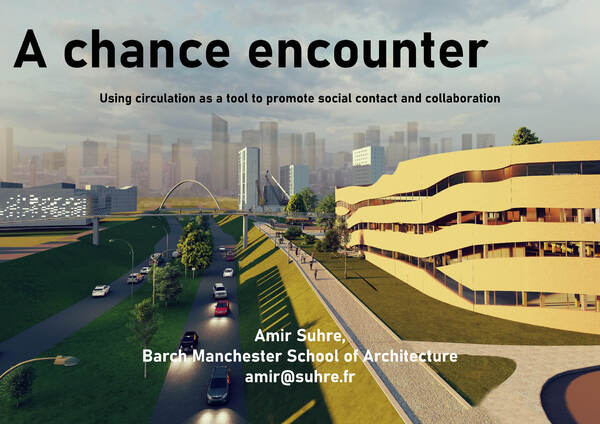Conceptually the building focuses on using circulation to create chance encounters between users (students, staff, locals) and form new connections, by engaging with one another casually. The building itself attracts students for a multitude of reasons: as a library space, study space, cantine, sit-in restaurants , café and even rooftop bar.
To meet the restaurant and cantine’s needs, the design features a disconnected kitchen building. Preparations before service are completed in the satellite kitchen and are then moved to the main building for cook-off and plating. This reduces fire hazard, frees up a lot of space for additional seating, and allows a road to run between the two buildings for product food deliveries and pick-up.
The architectural promenade features separate building entrances, forming a closed circulation route through the building, from top to bottom. This enables a visitor to traverse the entire building, discovering all the spaces before exiting the building from an alternative exit.
A void arches up from the ground and carves itself into the façade, forming the external access route leading to the roof entrance and green roof terrasse. From the same starting point a user can venture into the central courtyard and ascend an external ramp to enter the building at first floor.
Inside the building, social exposure of a visitor is maximized, inciting chance encounters. This is accomplished by maximizing co-visibility and overlapping the routes across the space, creating bottlenecks. Elongated circulation routes juxtaposed to leisure, study and hospitality spaces, allow small groups to harmoniously transition from studying together to having lunch or drinks and forming a new bond.
The circulation along the architectural promenade forms the backbone of the entire design, and a fragment of this promenade is exhibited in the walkthrough video : https://youtu.be/jL2BrrFRoAg


